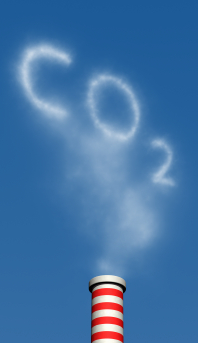 Charts and tables in this Emissions section of our website convert all greenhouse gas (GHG) emissions into CO2 equivalents so they can be compared.
Charts and tables in this Emissions section of our website convert all greenhouse gas (GHG) emissions into CO2 equivalents so they can be compared.
Each greenhouse gas (GHG) has a different global warming potential (GWP) and persists for a different length of time in the atmosphere.
The three main greenhouse gases (along with water vapour) and their 20-year global warming potential (GWP) compared to carbon dioxide are: (1)
- 1 x – carbon dioxide (CO2) NOTE: Any carbon dioxide added to the atmosphere will hang around for a long time: between 300 to 1,000 years. All this time, it will be contributing to trapping heat and warming the atmosphere.
- 84 x – methane (CH4) – I.e. Releasing 1 kg of CH4 into the atmosphere is about equivalent to releasing 84 kg of CO2. Methane’s 100-year GWP is about 28x CO2 – but it only persists in the atmosphere for a little more than a decade. The 100-year GWP is used to derive CO2e.
- 298 x – nitrous oxide (N2O) – I.e. Releasing 1 kg of N2O into the atmosphere is about equivalent to releasing about 298 kg of CO2. Nitrous oxide persists in the atmosphere for more than a century. It’s 20-year and 100-year GWP are basically the same.
Water vapour is not considered to be a cause of man-made global warming because it does not persist in the atmosphere for more than a few days.
There are other greenhouse gases which have far greater global warming potential (GWP) but are much less prevalent. These are sulphur hexafluoride (SF6), hydrofluorocarbons (HFCs), and perfluorocarbons (PFCs).
There are a wide variety of uses for SF6, HFCs, and PFCs but they have been most commonly used as refrigerants and for fire suppression. Many of these compounds also have a depleting effect on ozone in the upper atmosphere.
Global Warming Potential (GWP) table
The following table shows the 100-year global warming potential for greenhouse gases reported by the United Nations Framework Convention on Climate Change (UNFCCC). (1)
Click here to download an expanded PDF table: GHG Lifetimes and GWPs (144 kB)
How to read this table
The column on the right shows how much that chemical would warm the earth over a 100-year period as compared to carbon dioxide.
For example, sulphur hexafluoride is used to fill tennis balls. The table shows that a release on 1 kg of this gas is equivalent to 22,800 kg or 22.8 tonnes of CO2. Therefore, releasing ONE KILOGRAM of sulphur hexafluoride is about equivalent to driving 5 cars for a year! (2)
NOTE: The GWP values were changed in 2007. The values in the Intergovernmental Panel on Climate Change (IPCC) Fourth Assessment Report (AR4) in 2007 where refined from the IPCC Second Assessment Report (SAR) values used previously and still in much of the literature.




